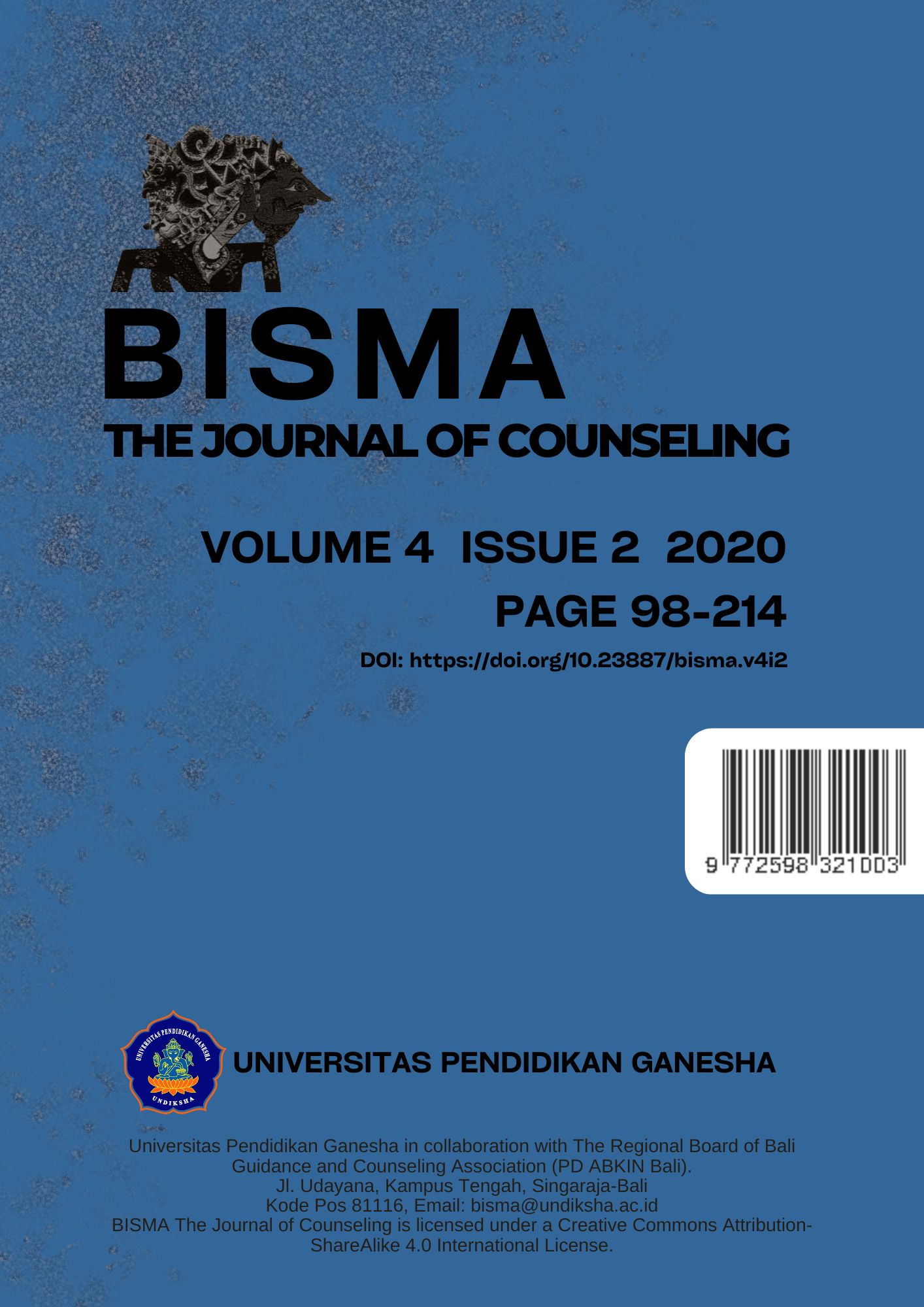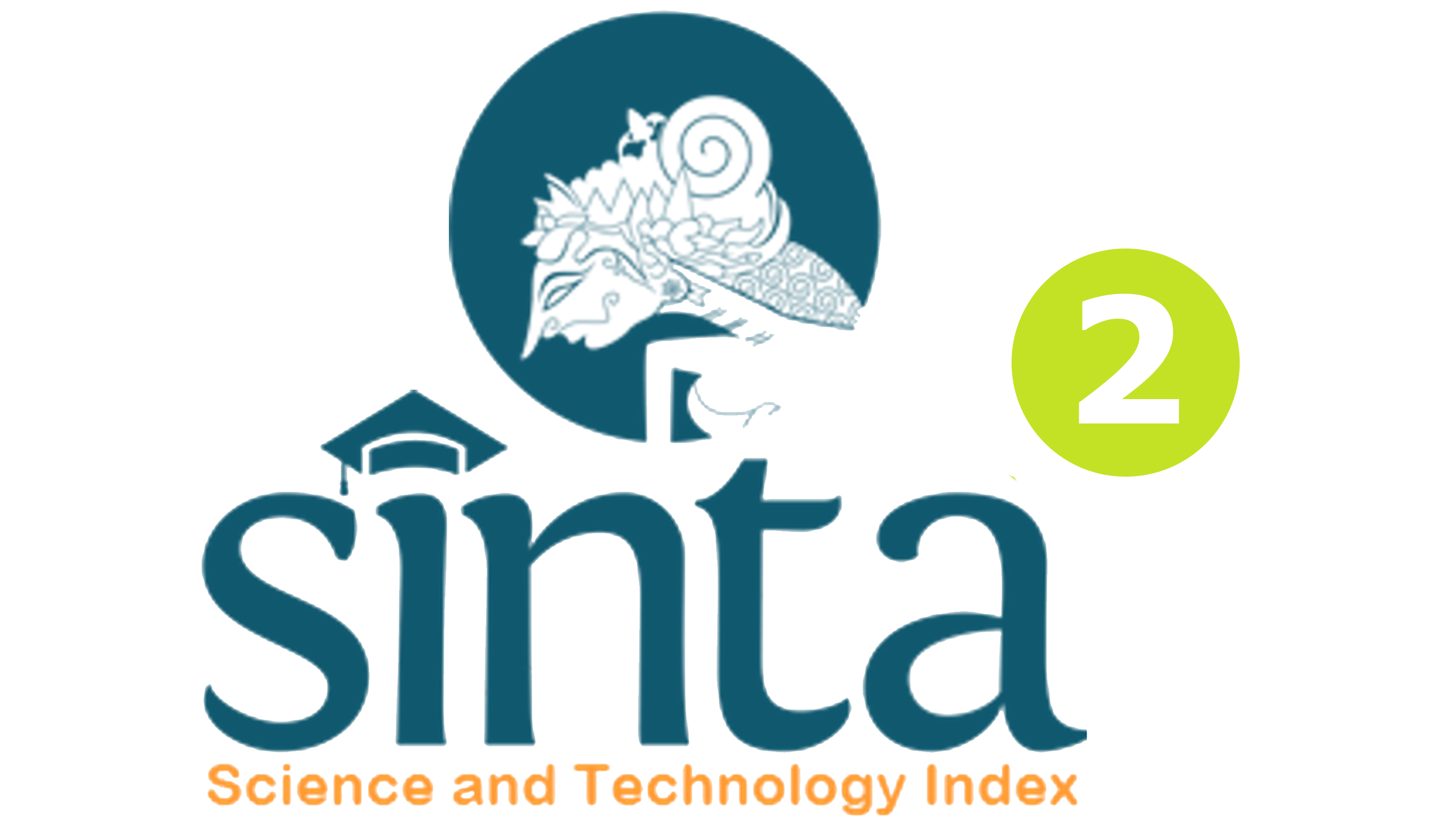Behavioral Counseling in Relaxation Techniques in Primigravida TM III: a Module Development
DOI:
https://doi.org/10.23887/bisma.v4i2.28023Keywords:
Behavioral counseling modules, Relaxation techniques, primigravida TM IIIAbstract
This research was conducted to be able to provide a behavioral counseling module with relaxation techniques to Primigravida TM III mothers where it is hoped that Primigravida TM III mothers can relax in facing the process of pregnancy and childbirth later. This type of research is Research and Development (R & D), the research model used is Four-D (4 D). The 4D model consists of four stages, namely: define, design, develop and disseminate, but dissemination is not carried out due to the COVID 19 pandemic. Analysis to test the validity of the instrument using the Lawshe CVR and CVI formulas by testing. by 5 experts in their expert fields, namely Guidance and Counseling Experts, Psychology Experts and Health Experts from both educational institutions and Health service providers (Midwives Independent Practice). The results showed that the CVR score was 21.6 and the CVI score was 0.9818, so the content of the product was important and based on data analysis, the value of the product content validity in the form of a behavioral counseling module in Trimester III primigravida was high and significant.References
Angraini, D. E., Latifah, A. I., Yuliani, D., Rahmani, Arina, D., & Husna, A. N. (2019). Skala Kecemasan Menghadapi Tes Masuk. The 10th Universitu Research Colloqium, 22–28. Retrieved from http://repository.urecol.org/index.php/proceeding/article/view/802
Annisa, D. F., & Ifdil, I. (2016). Konsep Kecemasan (Anxiety) pada Lanjut Usia (Lansia). Konselor, 5(2), 93. https://doi.org/10.24036/02016526480-0-00
Apriliana, I. P. A., Suranata, K., & Dharsana, I. K. (2019). Mereduksi Kecemasan Siswa Melalui Konseling Cognitive Behavioral. Indonesian Journal of Educational Counseling, 3(1), 21–30. https://doi.org/10.30653/001.201931.46
Asrori, A. (2015). Terapi Kognitif Perilaku Untuk Mengatasi Gangguan Kecemasan Sosial. Jurnal Ilmiah Psikologi Terapan (JIPT), 03(Vol 3, No 1 (2015)), 89–107. Retrieved from http://ejournal.umm.ac.id/index.php/jipt/article/view/2128
Brooks, A. M. T., Stuart, G. W., & Sundeen, S. J. (1981). Principles and Practice of Psychiatric Nursing. In The American Journal of Nursing (Vol. 81). https://doi.org/10.2307/3462918
Burlow, D. H., & Durand, V. M. (2012). Abnormal Psychology: An Integrated Approach.
Cheng, B. H., & McCarthy, J. M. (2018). Understanding the dark and bright sides of anxiety: A theory of workplace anxiety. Journal of Applied Psychology, 103(5), 537–560. https://doi.org/10.1037/apl0000266
Corey, G. (2005). Teori dan Praktek Konseling dan Psikoterapi. Bandung: PT. Refika Aditama.
Dharsana, K. (2014). Strategi Modifikasi Kognitif. Graha Ilmu.
Dominikus David Biondi Situmorang, Mulawarman, M., & Mungin Eddy Wibowo. (2018). Comparison of the Effectiveness of CBT Group Counseling with Passive vs Active Music Therapy to Reduce Millennials Academic Anxiety. International Journal of Psychology and Educational Studies, 5(3), 51–62. https://doi.org/10.17220/ijpes.2018.03.005
Firmantyo, T., & Alsa, A. (2017). Integritas Akademik dan Kecemasan Akademik dalam Menghadapi Ujian Nasional pada Siswa. Psikohumaniora: Jurnal Penelitian Psikologi, 1(1), 1. https://doi.org/10.21580/pjpp.v1i1.959
Gogol, K., Brunner, M., Preckel, F., Goetz, T., & Martin, R. (2016). Developmental dynamics of general and school-subject-specific components of academic self-concept, academic interest, and academic anxiety. Frontiers in Psychology, 7(MAR). https://doi.org/10.3389/fpsyg.2016.00356
Hallit, S., Haddad, C., Hallit, R., Akel, M., Obeid, S., Haddad, G., … Salameh, P. (2020). Validation of the Hamilton Anxiety Rating Scale and State Trait Anxiety Inventory A and B in Arabic among the Lebanese population. Clinical Epidemiology and Global Health, (xxxx). https://doi.org/10.1016/j.cegh.2020.03.028
Hamdiah, H., Suwondo, A., Sri Hardjanti, T., Soejoenoes, A., & Anwar, M. C. (2017). Effect of Prenatal Yoga on Anxiety, Blood Pressure, and Fetal Heart Rate in Primigravida Mothers. Belitung Nursing Journal, 3(3), 246–254. https://doi.org/10.33546/bnj.99
Hasianna, S. T., Surawijaya, A. K., Maulana, T. A., Faal, B. I., Kedokteran, F., Maranatha, U. K., … Bandung, N. (2014). Semester Satu Di Fakultas Kedokteran Universitas Kristen Maranatha Tahun 2014. Retrieved from http://repository.maranatha.edu/12445/1/1010167_Abstract_TOC.pdf
Hendryadi. (2017). Validitas Isi: Tahap Awal Pengembangan Kuesioner. Jurnal Riset Manajemen Dan Bisnis (JRMB) Fakultas Ekonomi UNIAT, 2(2), 169–178.
KBBI web. (n.d.).
Lalita, T. V. (2014). Hubungan antara Self Efficacy dengan Kecemasan pada Remaja yang Putus Sekolah. Jurnal Psikologi Klinis Dan Kesehatan Mental, 3(2), 60–66. Retrieved from http://journal.unair.ac.id/filerPDF/jpkk6d1247d357full.pdf
Lawshe, C. H. (1975). Quantitative Approach To Content Validity. Personnel Psychology, 4, 563–575. Retrieved from https://doi.org/10.1111/j.1744-6570.1975.tb01393.x
Mahajan, G. (2015). Academic Anxiety of Secondary School Students in Relation to their Parental Encouragement. International Journal of Research in Humanities and Social Sciences, 3(4), 23–29. Retrieved from http://www.raijmr.com/ijrhs/wp-content/uploads/2017/11/IJRHS_2015_vol03_issue_04_04.pdf
Misdeni, M., Syahniar, S., & Marjohan, M. (2019). The effectiveness of rational emotive behavior therapy approach using a group setting to overcome anxiety of students facing examinations. International Journal of Research in Counseling and Education, 3(2), 82–88. https://doi.org/10.24036/0064za0002
Núñez-Peña, M. I., Suárez-Pellicioni, M., & Bono, R. (2016). Gender Differences in Test Anxiety and Their Impact on Higher Education Students’ Academic Achievement. Procedia - Social and Behavioral Sciences, 228(June), 154–160. https://doi.org/10.1016/j.sbspro.2016.07.023
Penny, N. H., Bires, S. J., Bonn, E. A., Dockery, A. N., & Pettit, N. L. (2016). Moral distress scale for occupational therapists: Part 1. Instrument development and content validity. American Journal of Occupational Therapy, 70(4), 1–8. https://doi.org/10.5014/ajot.2015.018358
Permata, K. A., & Widiasavitri, P. N. (2019). Hubungan Antara Kecemasan Akademik dan Sleep Paralysis pada Mahasiswa Fakultas Kedokteran Universitas Udayana Tahun Pertama. Jurnal Psikologi Udayana, 6(01), 1. https://doi.org/10.24843/jpu.2019.v06.i01.p01
Rehman, A. U. (2016). Academic Anxiety among Higher Education Students of India , Causes and Preventive Measures : An Exploratory Study. International Journal of Modern Social Science., 5(2), 102–116. Retrieved from https://www.researchgate.net/profile/Atieq_Rehman2/publication/303918537_Academic_Anxiety_among_Higher_Education_Students_of_India_Causes_and_Preventive_Measures_An_Exploratory_Study/links/575d6ab708aed88462163ff7.pdf
Rith-Najarian, L. R., Boustani, M. M., & Chorpita, B. F. (2019). A systematic review of prevention programs targeting depression, anxiety, and stress in university students. Journal of Affective Disorders, 257(May), 568–584. https://doi.org/10.1016/j.jad.2019.06.035
Sevgi, S., & Arslan, K. (2020). European Journal of Education Studies EXPLORING MIDDLE SCHOOL STUDENTS MATHEMATICS SELF-EFFICACY AND MATHEMATICS ANXIETY. 41–61. https://doi.org/10.5281/zenodo.3718470
Shives, L. R. (1995). Basic Concepts in Psychiatric-Mental Health Nursing. In Gastroenterology Nursing (Vol. 18). https://doi.org/10.1097/00001610-199509000-00013
Shrotryia, V. K., & Dhanda, U. (2019). Content Validity of Assessment Instrument for Employee Engagement. SAGE Open, 9(1). https://doi.org/10.1177/2158244018821751
Sugiyono, P. D. (2018). Metode Penelitian Kombinasi (Mixed Methods). Bandung: Alfabeta.
Taty, T. (2020). Analysis of learning anxiety among senior high school students. 5(1), 39–45. https://doi.org/10.23916/0020200526720
Thiagarajan, S., Semmel, D. S & Semmel, M. I. (1974). Instructional Development for Training Teachers of Expectional Children. Minneapolis, Minnesota: Leadership Training Institute/Special Education, University of Minnesota.
Vivin, Marpaung, W., & Manurung, Y. S. (2019). Kecemasan dan motivasi belajar. Persona:Jurnal Psikologi Indonesia, 8(2), 240–257. https://doi.org/10.30996/persona.v8i2.2276
von der Embse, N. P., Scott, E. C., & Kilgus, S. P. (2015). Sensitivity to change and concurrent validity of direct behavior ratings for academic anxiety. School Psychology Quarterly, 30(2), 244–259. https://doi.org/10.1037/spq0000083
Zamanzadeh, V., Ghahramanian, A., Rassouli, M., Abbaszadeh, A., Alavi-Majd, H., & Nikanfar, A.-R. (2015). Design and Implementation Content Validity Study: Development of an instrument for measuring Patient-Centered Communication. Journal of Caring Sciences, 4(2), 165–178. https://doi.org/10.15171/jcs.2015.017









